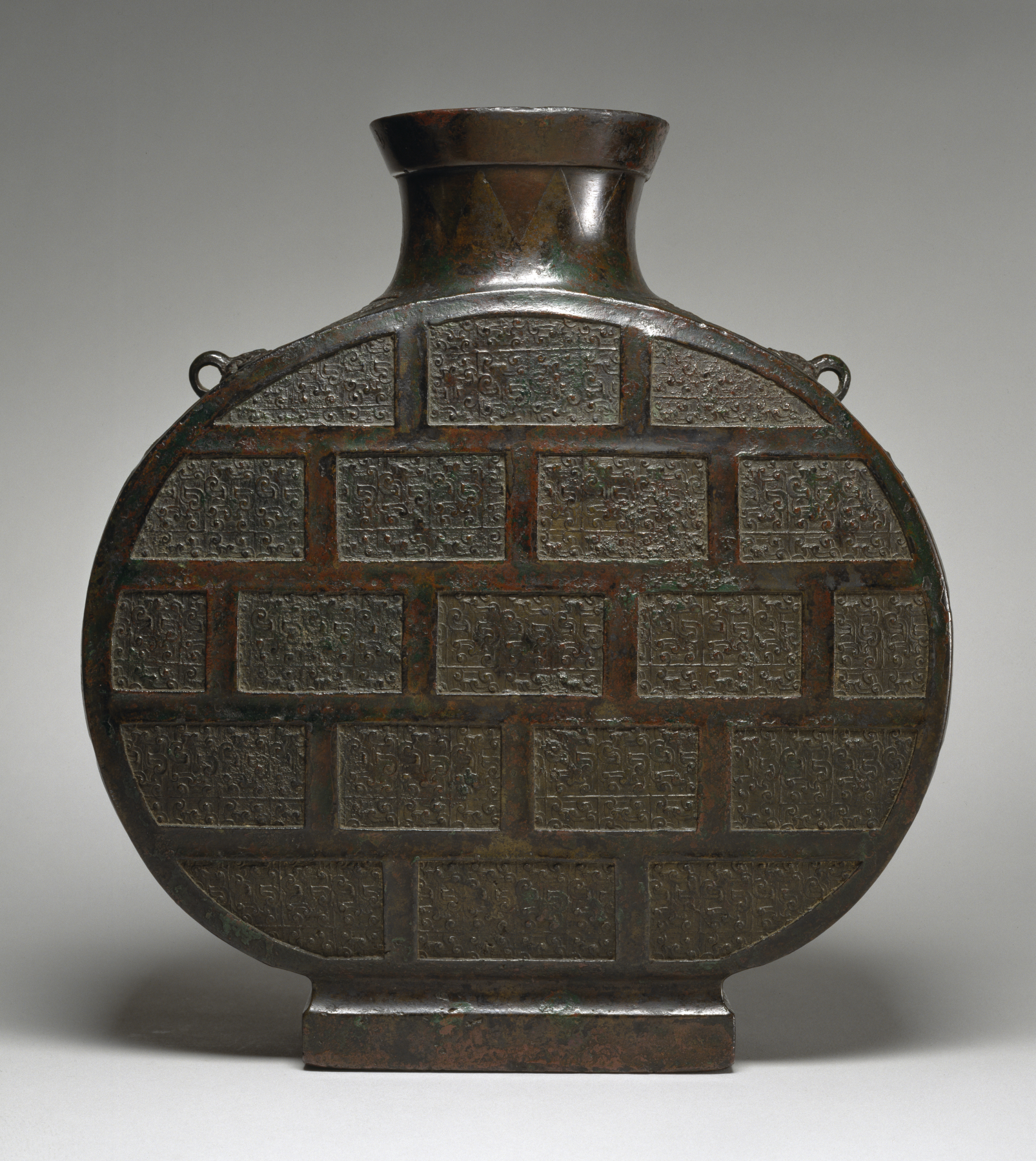Ritual Wine Flask (Bianhu)
(China )
During a ritual, wine would have been poured out of this bronze flask. Its shape was modeled after the flasks used by the nomadic peoples on the borders of the region now known as China during the 5th–3rd centuries BCE.
Some of the earliest belief systems in China included communicating with spirits and worshipping ancestors. Later, the philosophies and religions of Confucianism, Daoism, and Buddhism contributed their respective teachings and rituals. The interplay between these traditions over time helped define Chinese society and culture. Many rituals and ceremonies took place at an altar (in temples or homes)—it was at the altar where the human world, the natural world, and the supernatural worlds connected. So the objects that were placed on a ritual altar possess meaning and significance. The practice of conducting rituals at the altar continued in China through the Qing dynasty (1644–1911).
Provenance
Provenance (from the French provenir, 'to come from/forth') is the chronology of the ownership, custody, or location of a historical object. Learn more about provenance at the Walters.
William T. / Henry Walters Collection, Baltimore [date and mode of acquisition unknown]; Walters Art Museum, 1931, by bequest.
Exhibitions
| 1995 | The Allure of Bronze. The Walters Art Gallery, Baltimore. |
Geographies
China (Place of Origin)
Measurements
H: 13 1/2 × W: 12 1/4 × D: 4 in. (34.3 × 31.1 × 10.2 cm)
Credit Line
Acquired by William T. or Henry Walters, before 1931
Accession Number
In libraries, galleries, museums, and archives, an accession number is a unique identifier assigned to each object in the collection.
In libraries, galleries, museums, and archives, an accession number is a unique identifier assigned to each object in the collection.
54.1242


